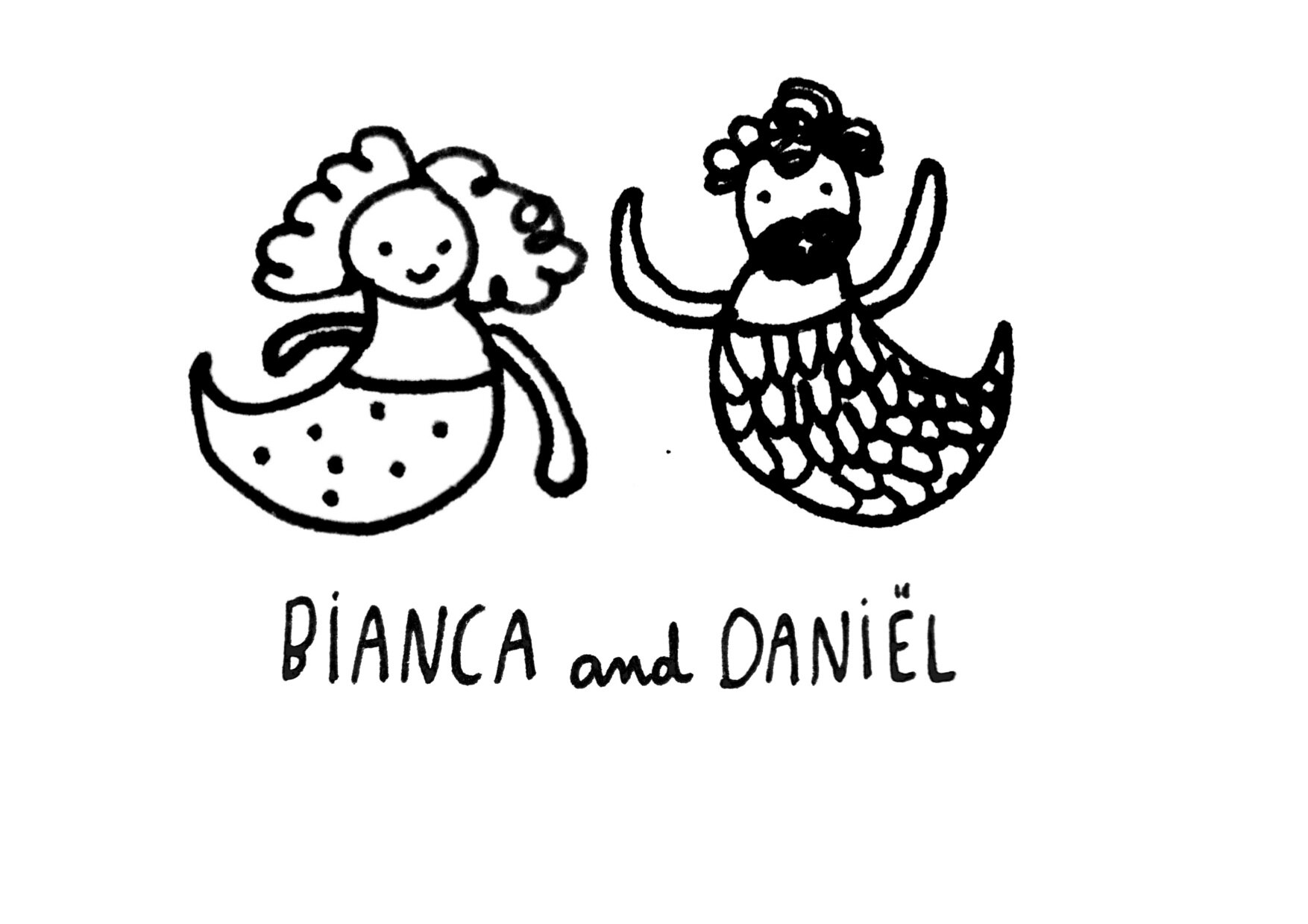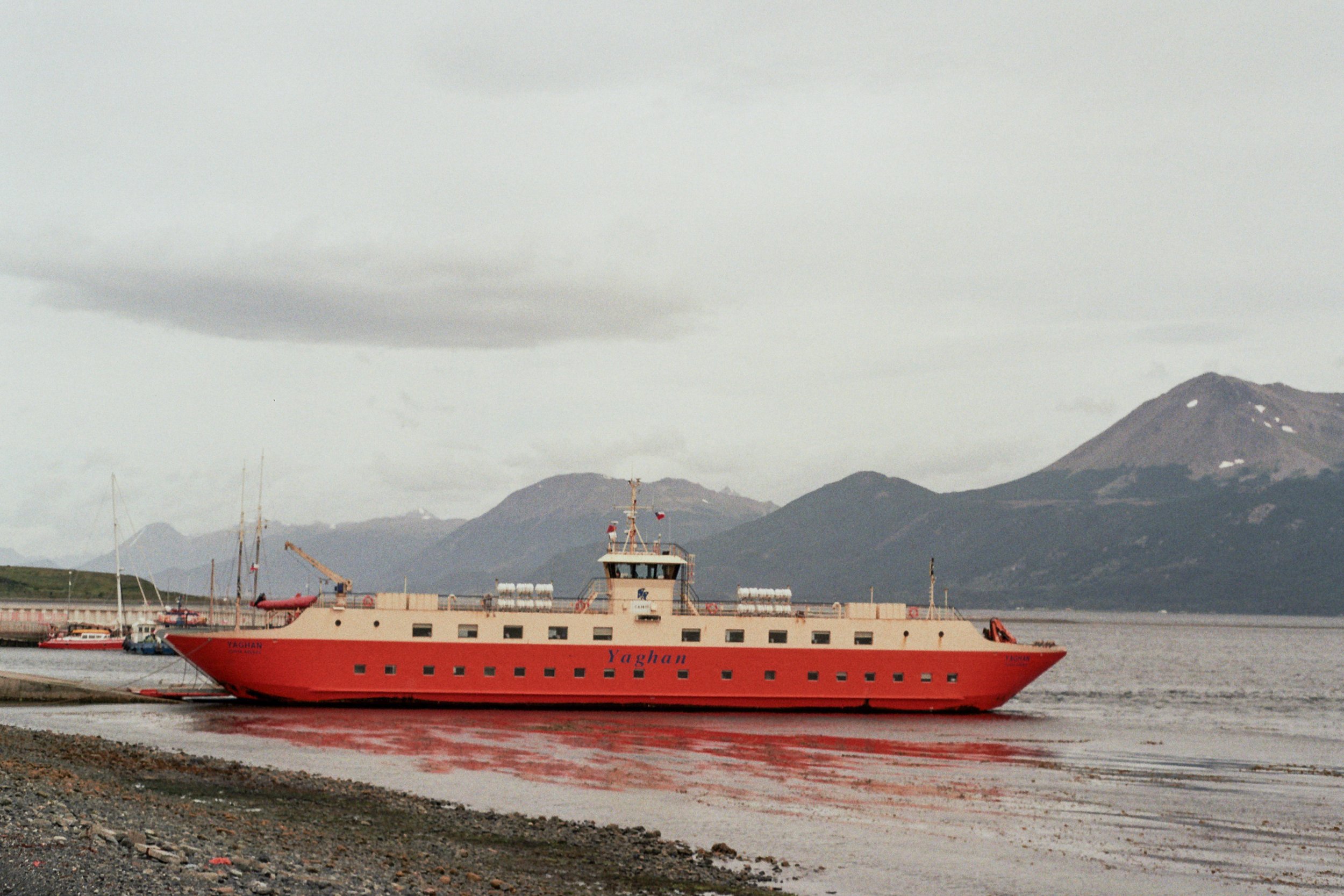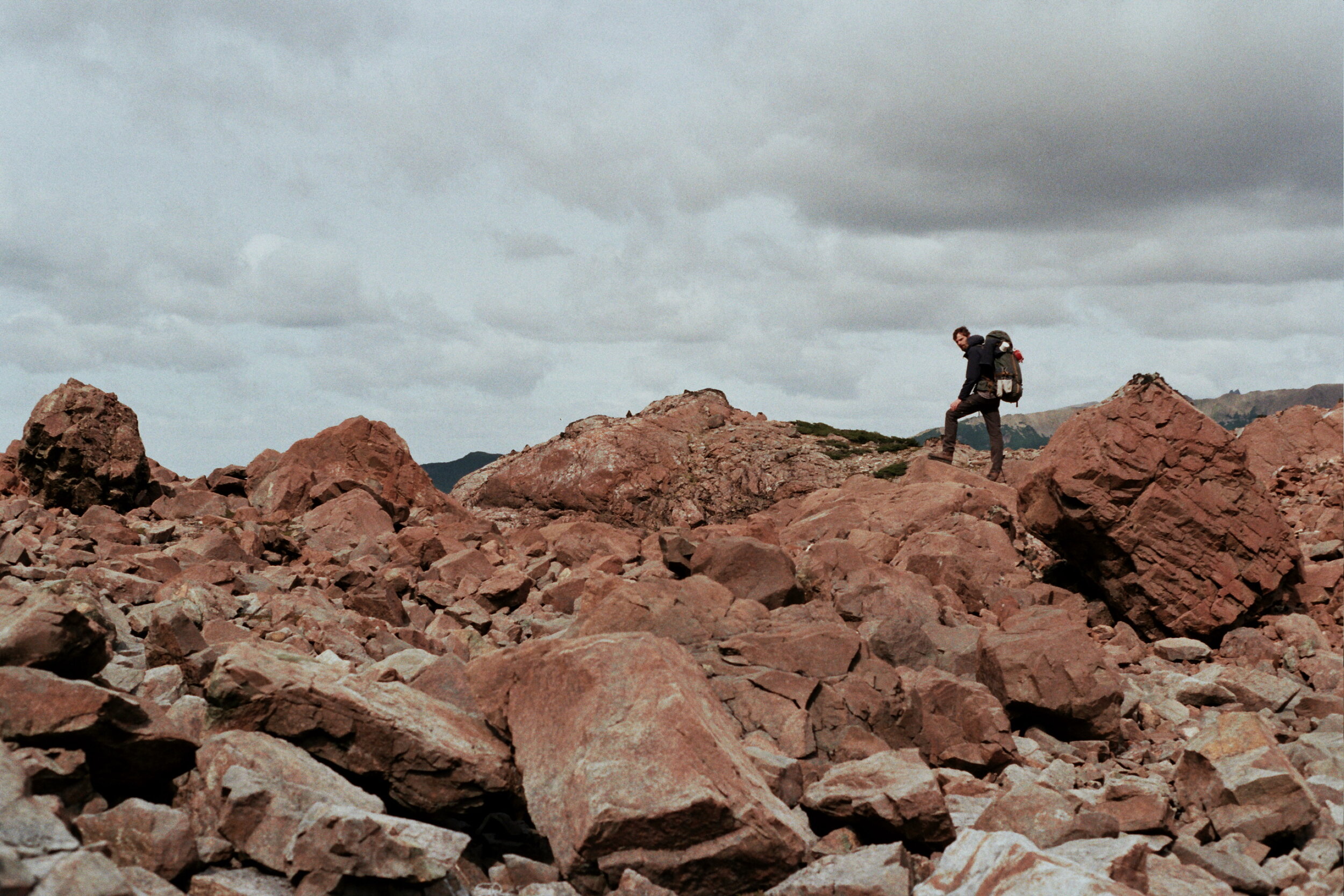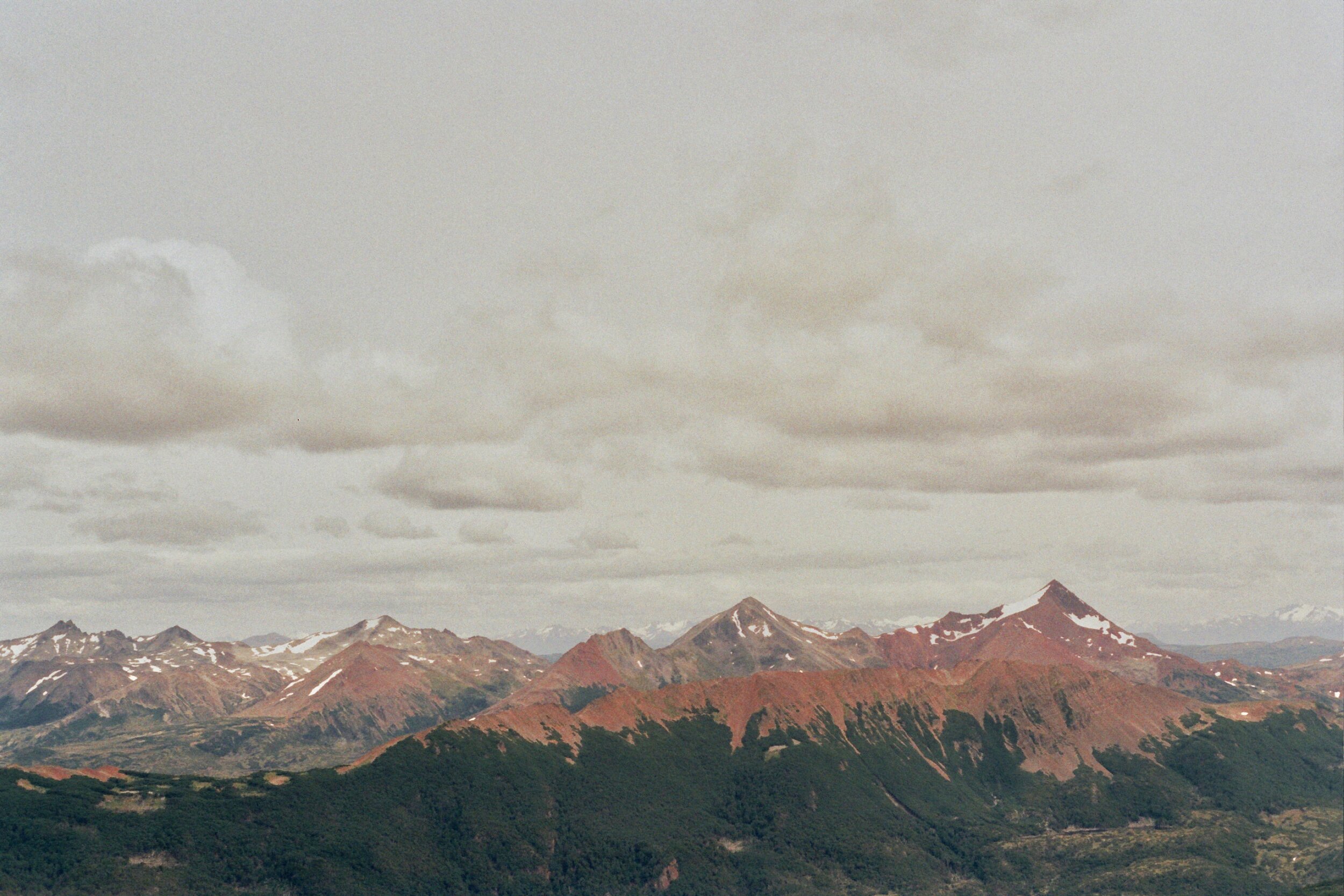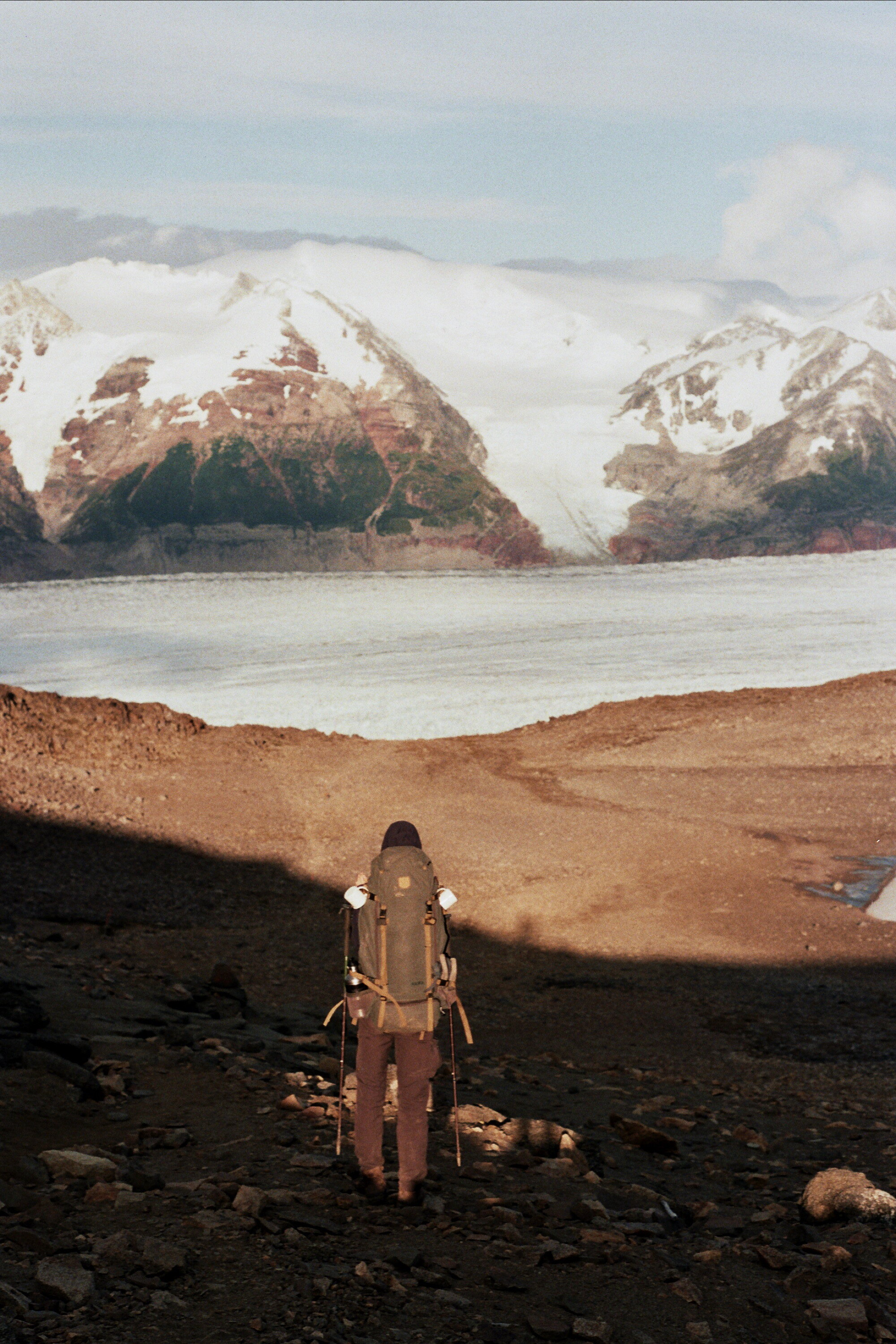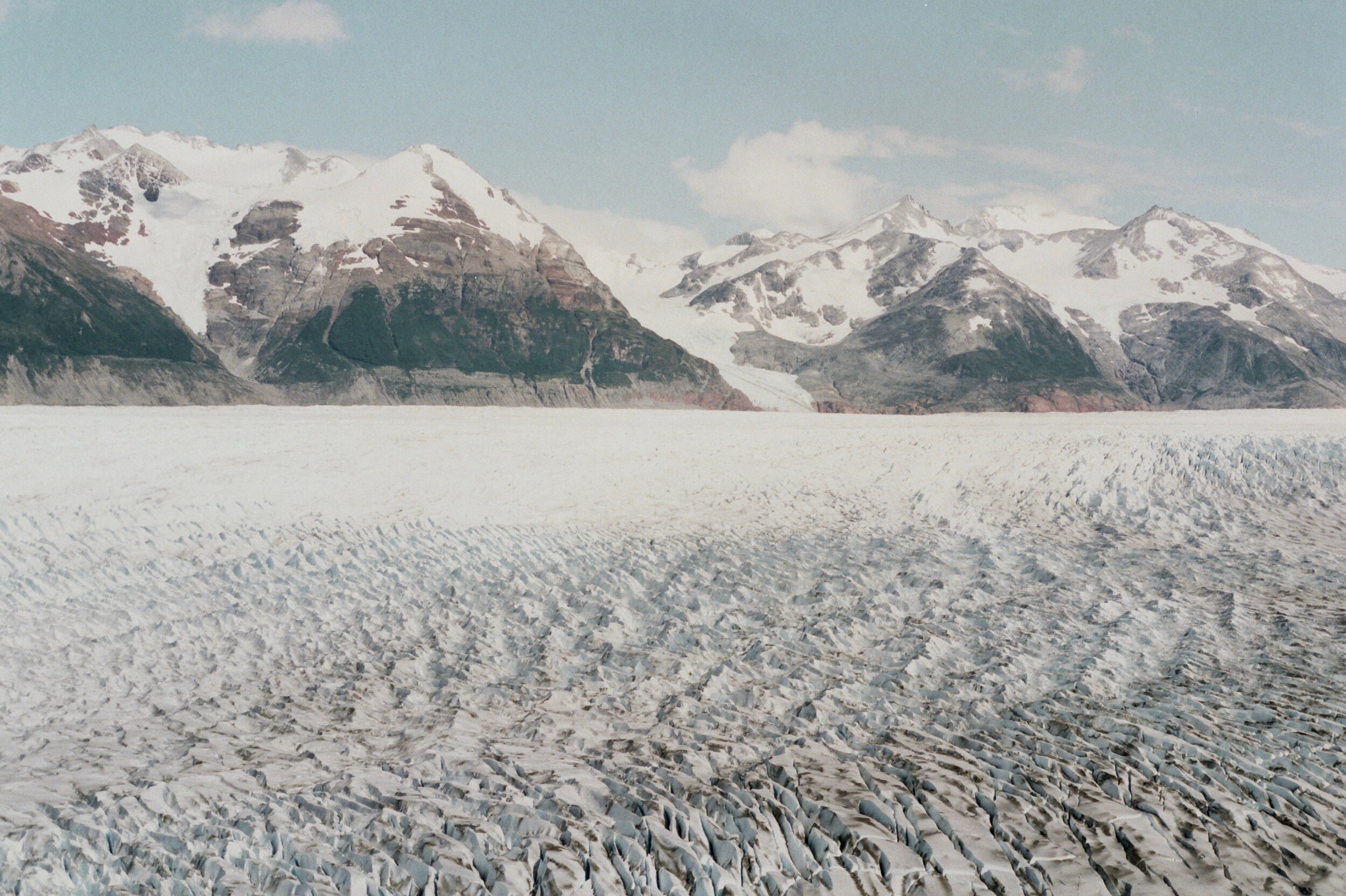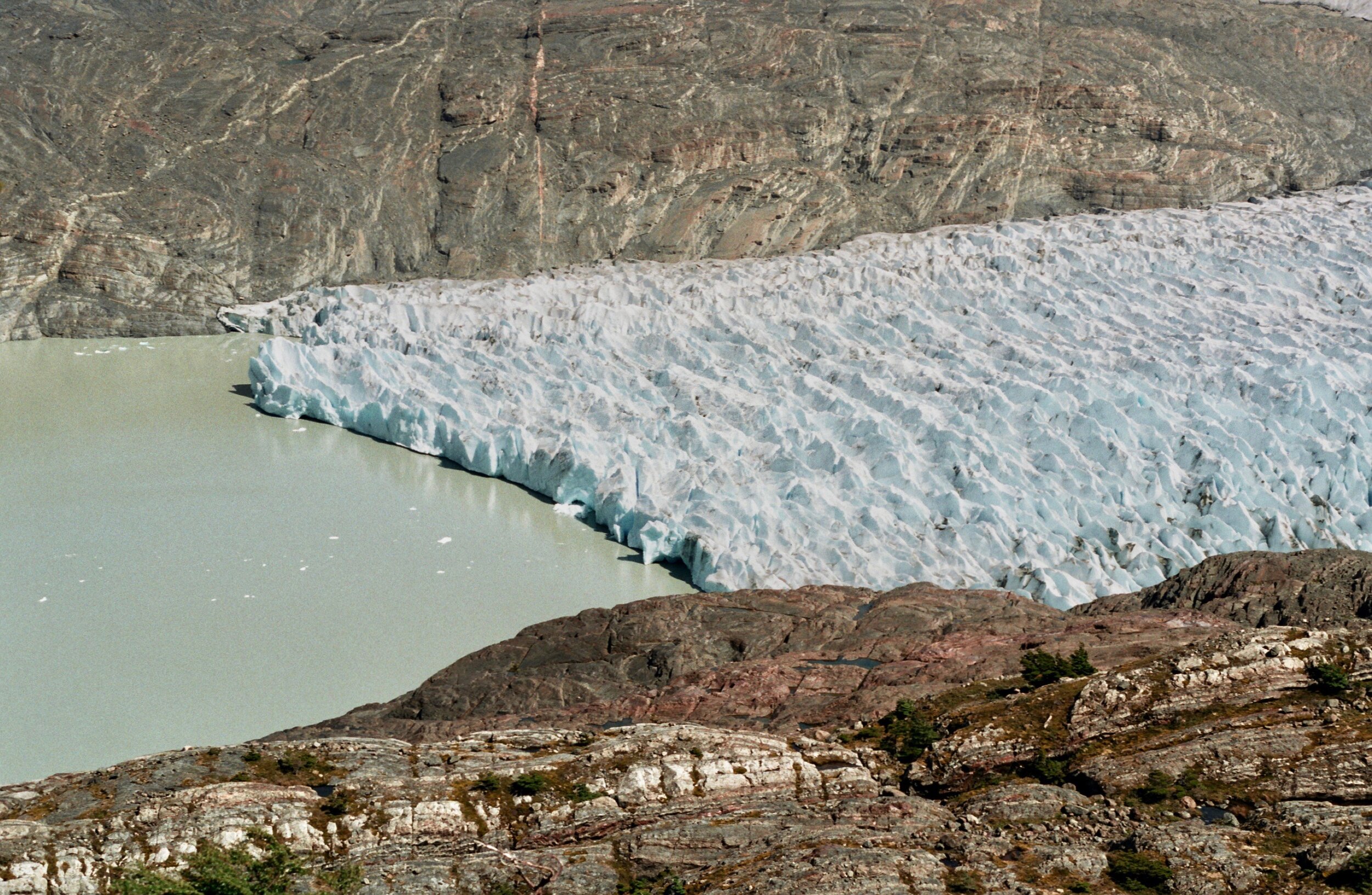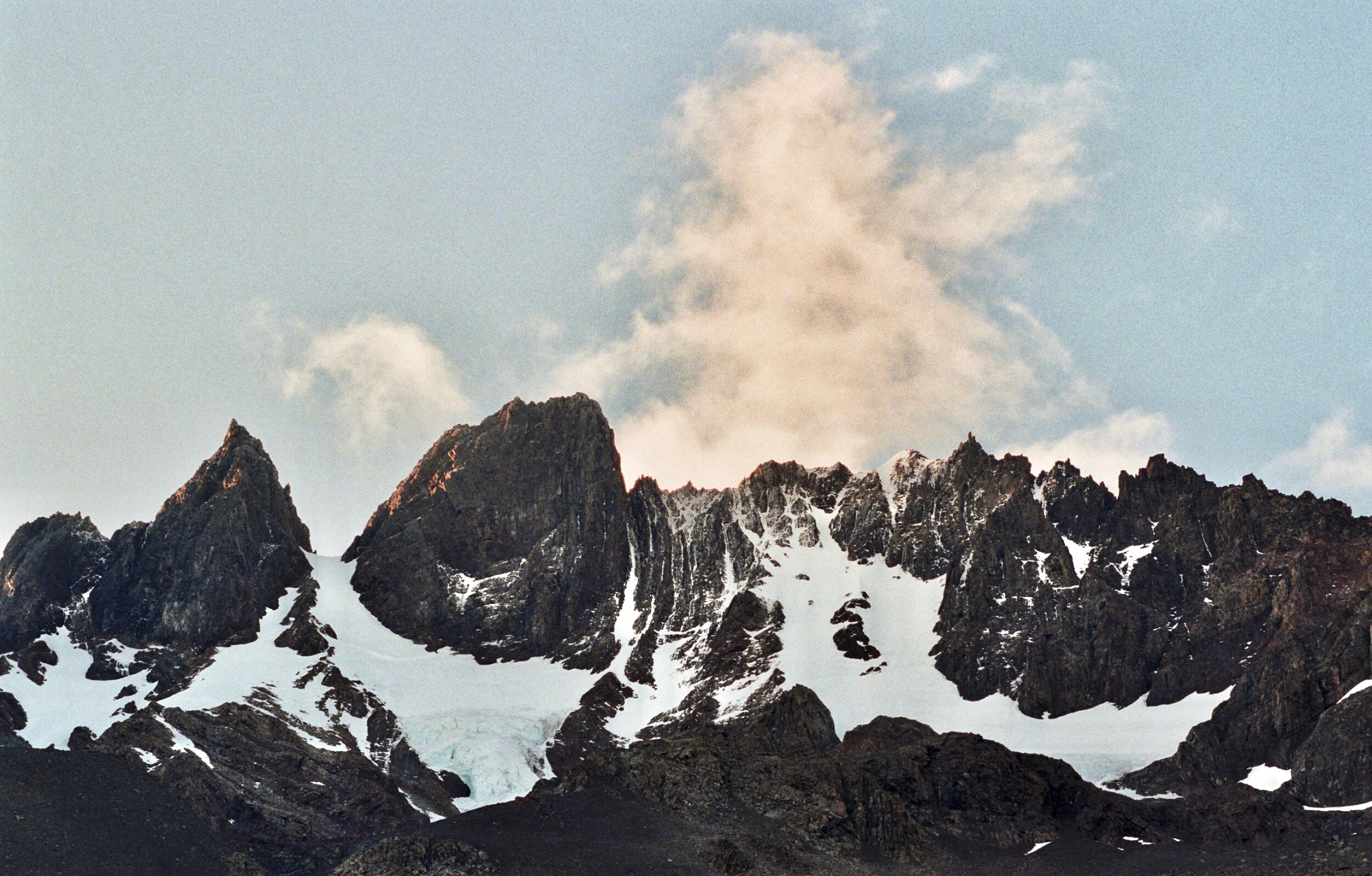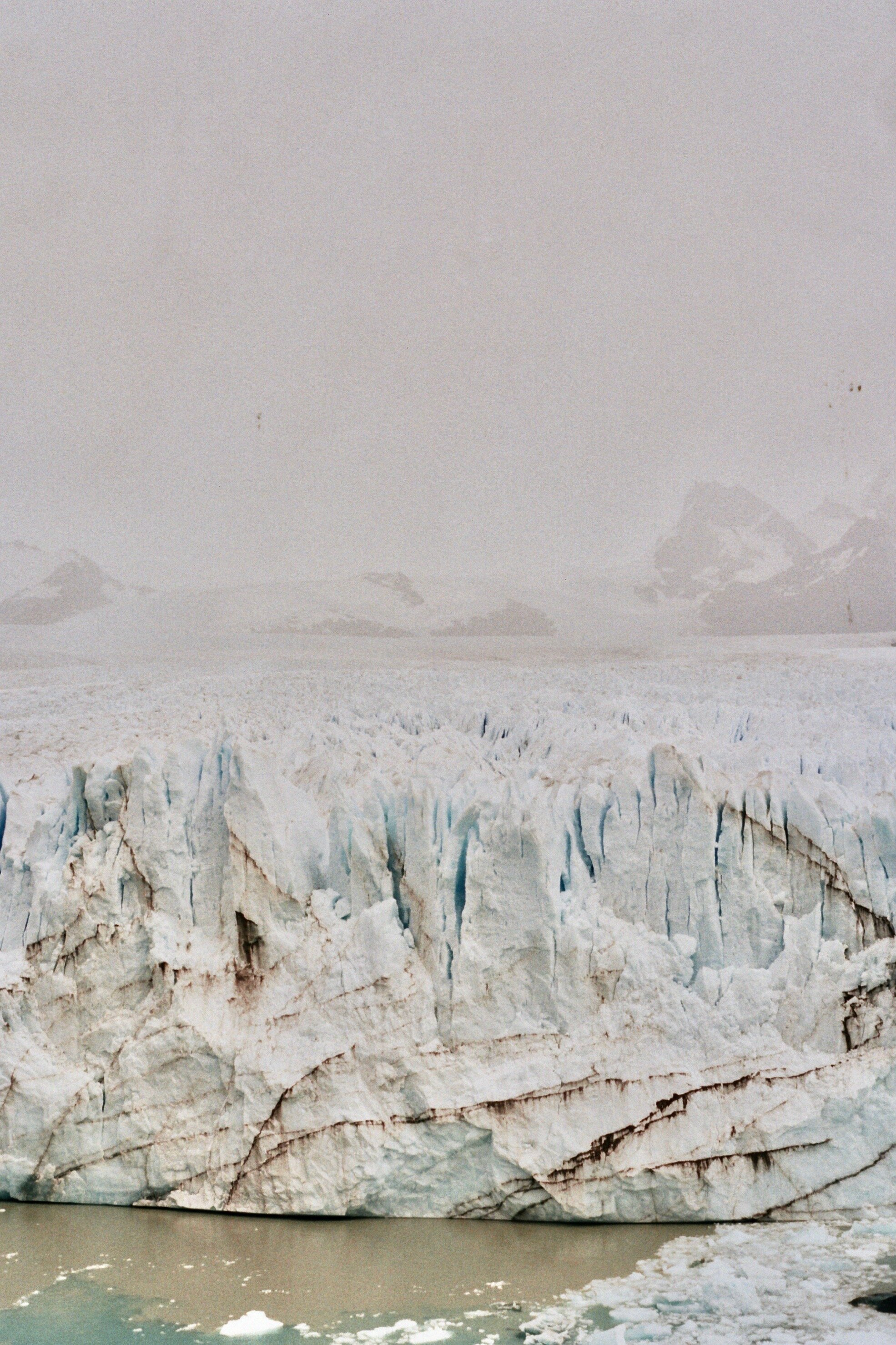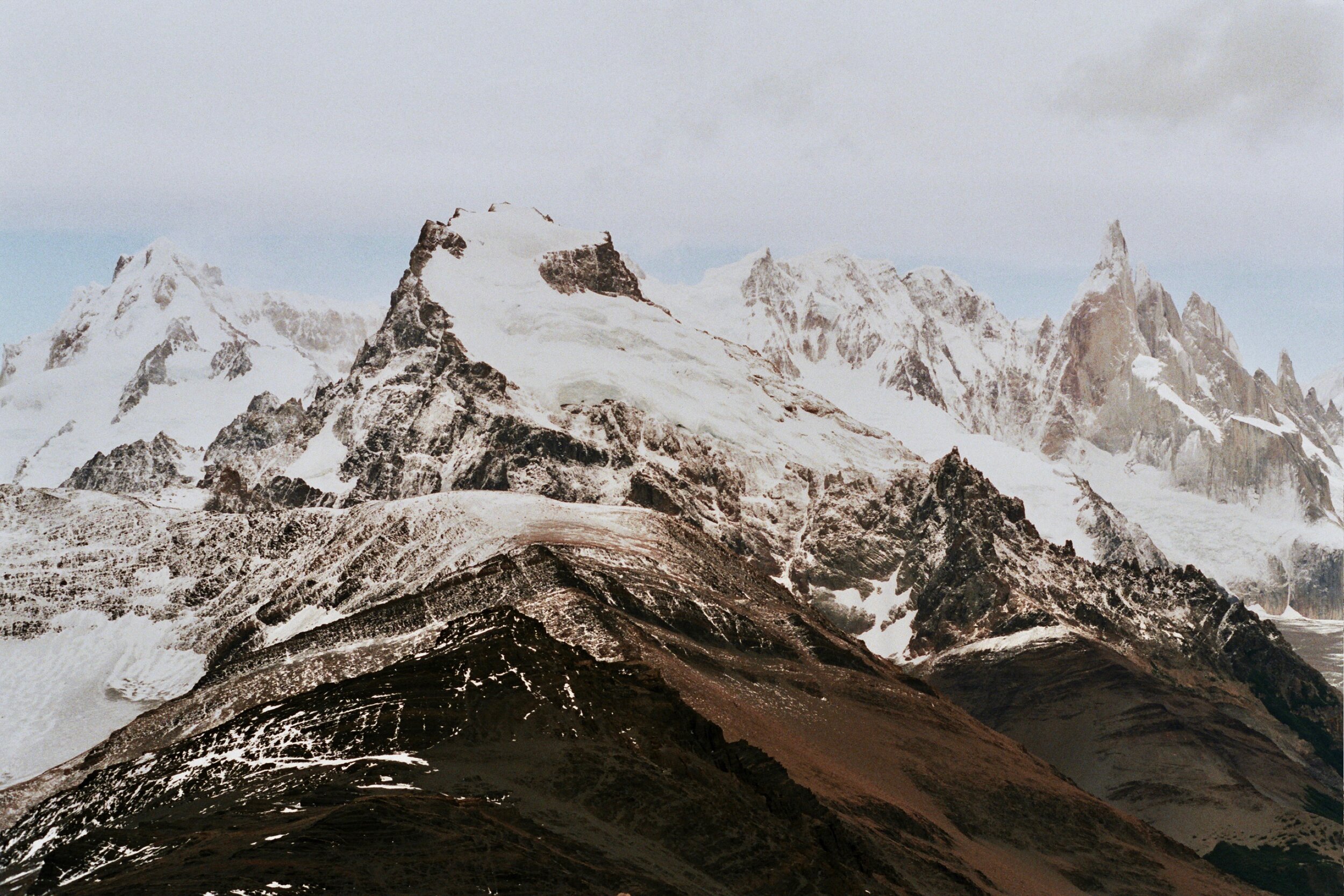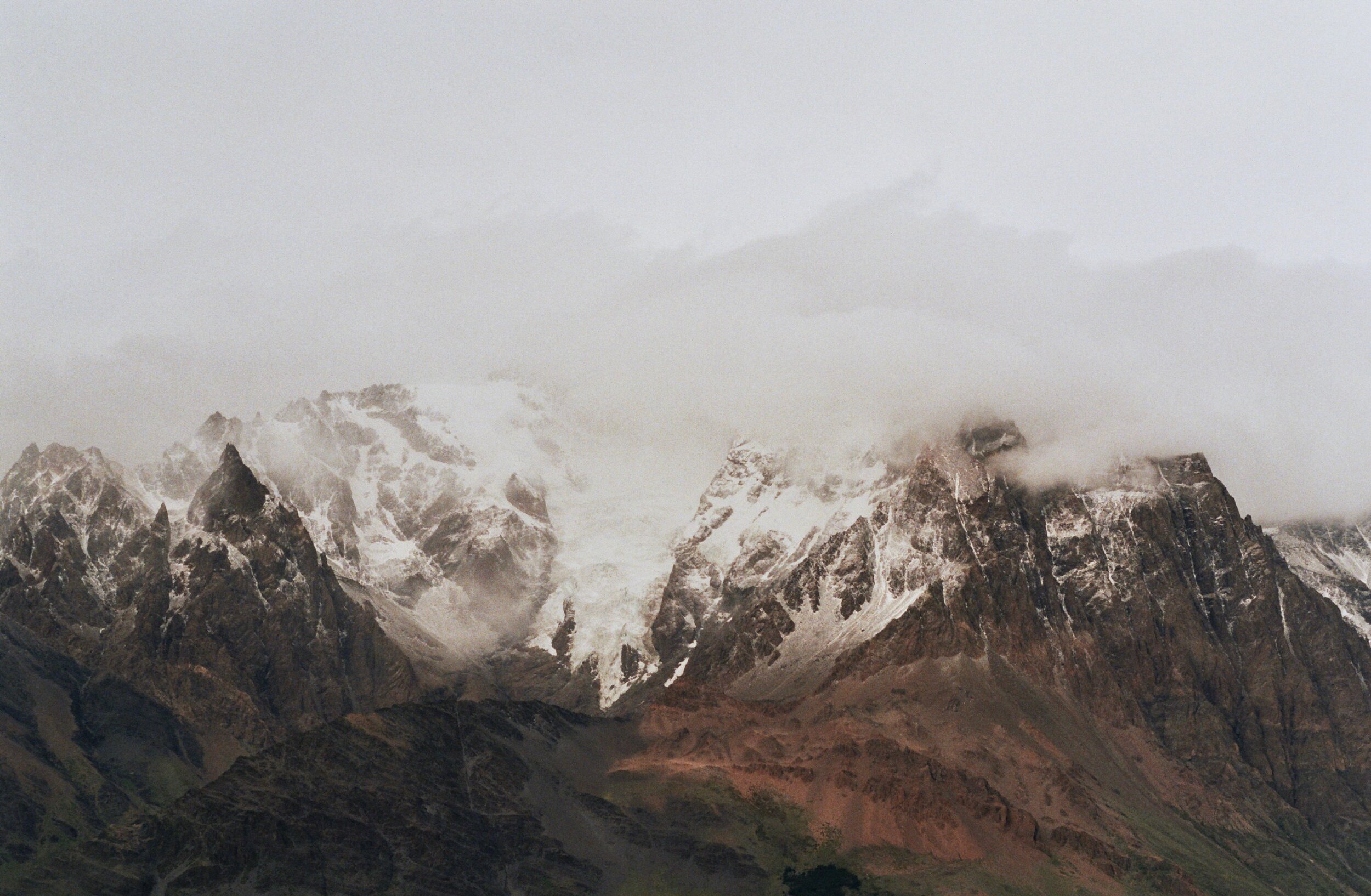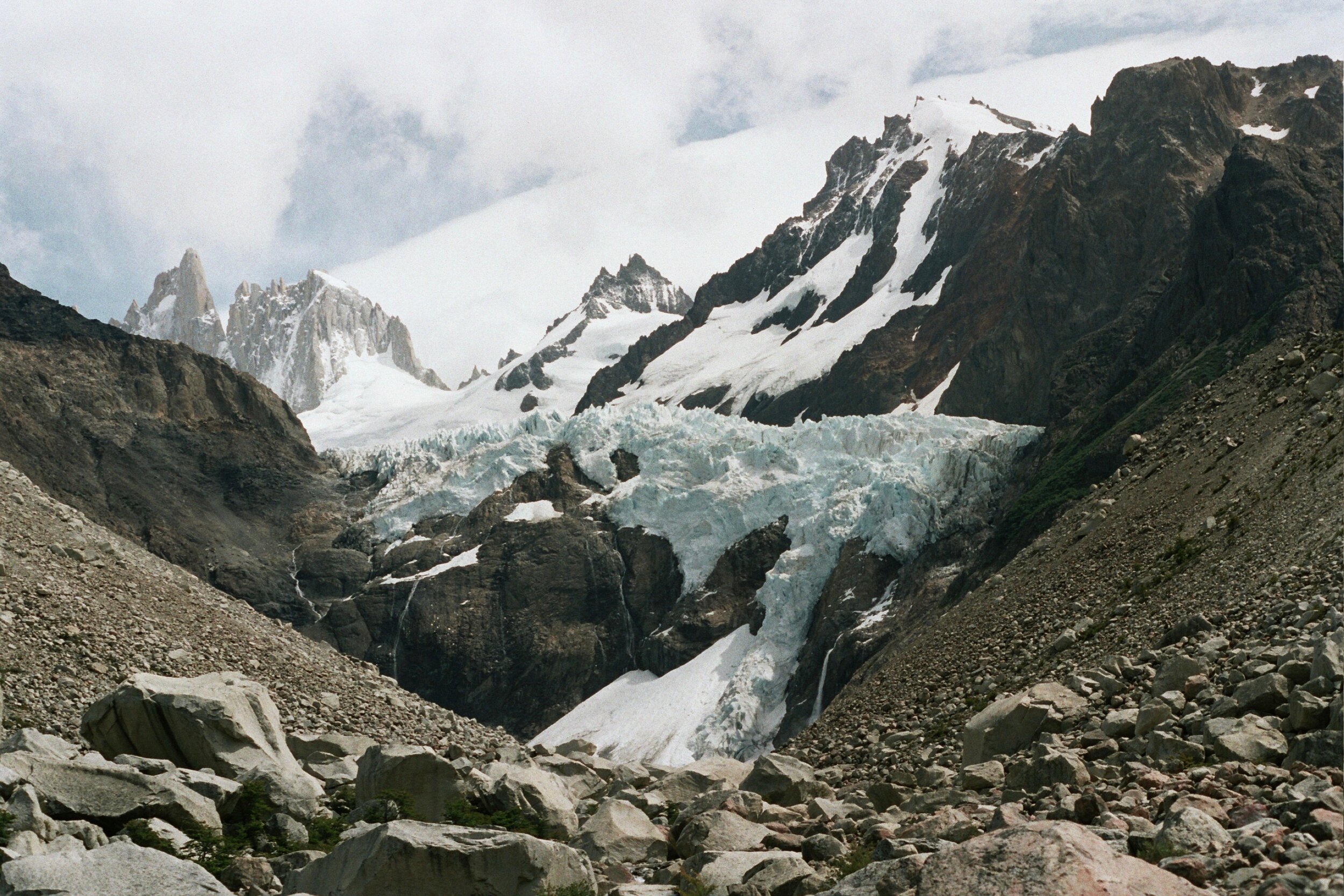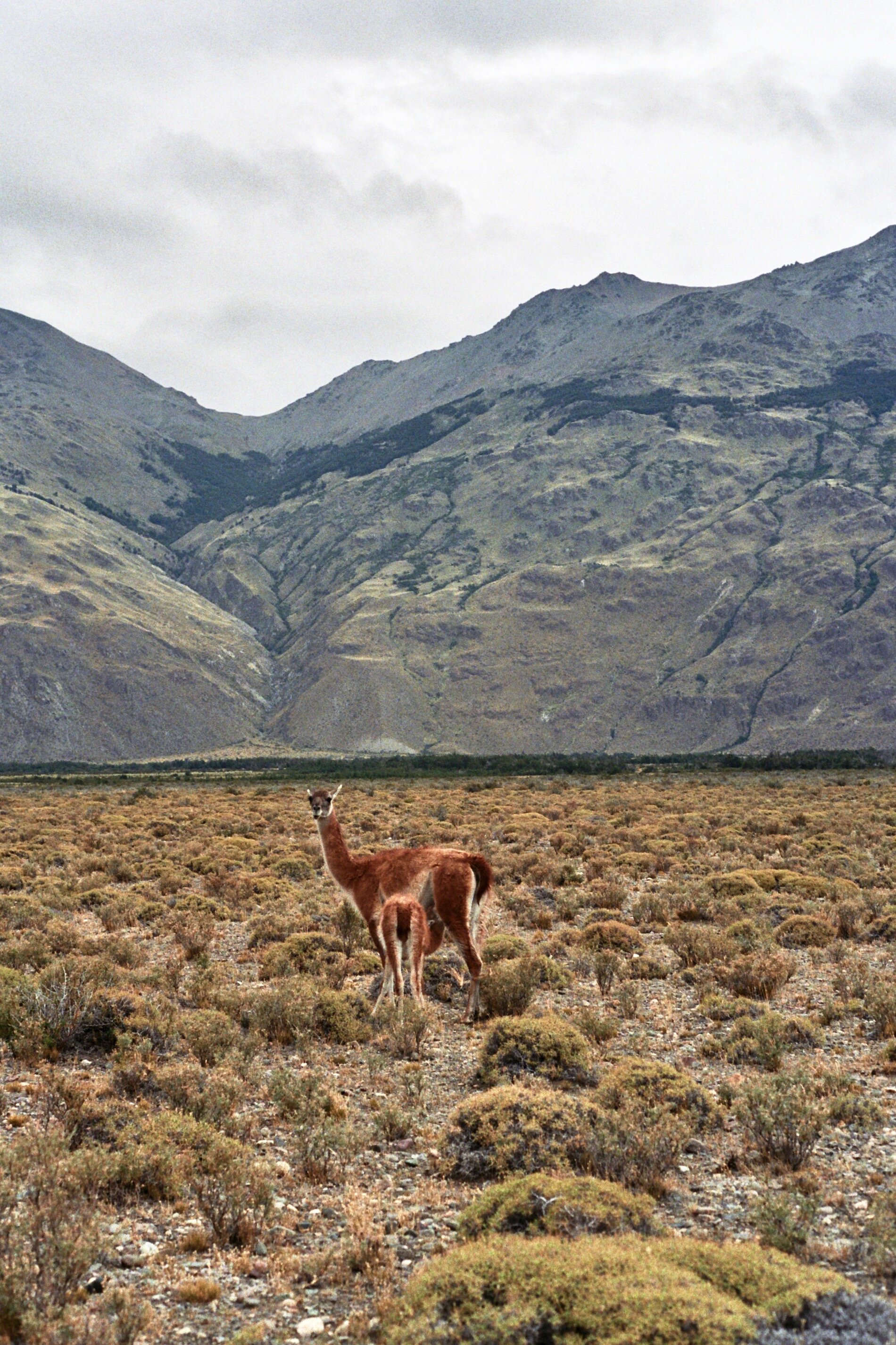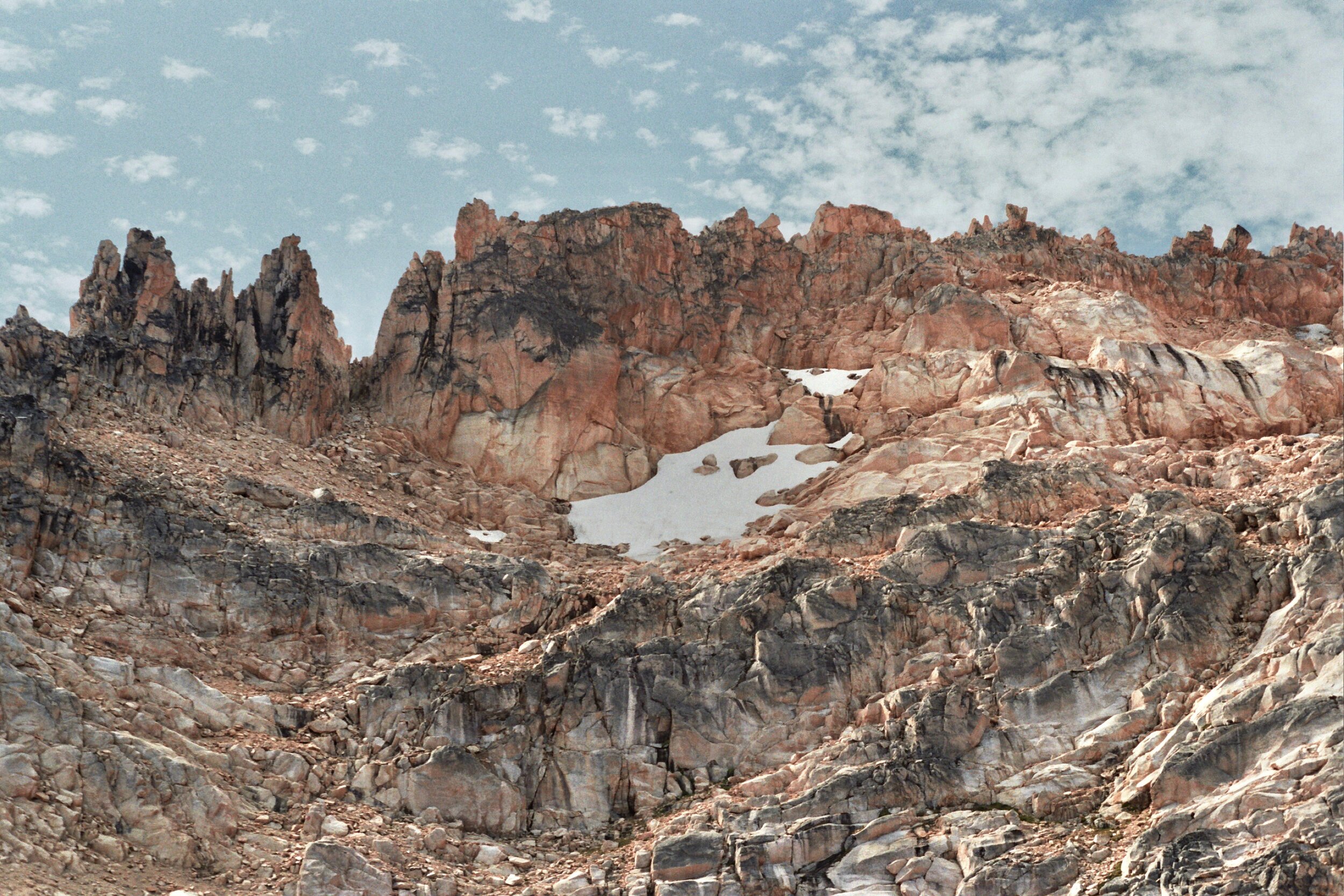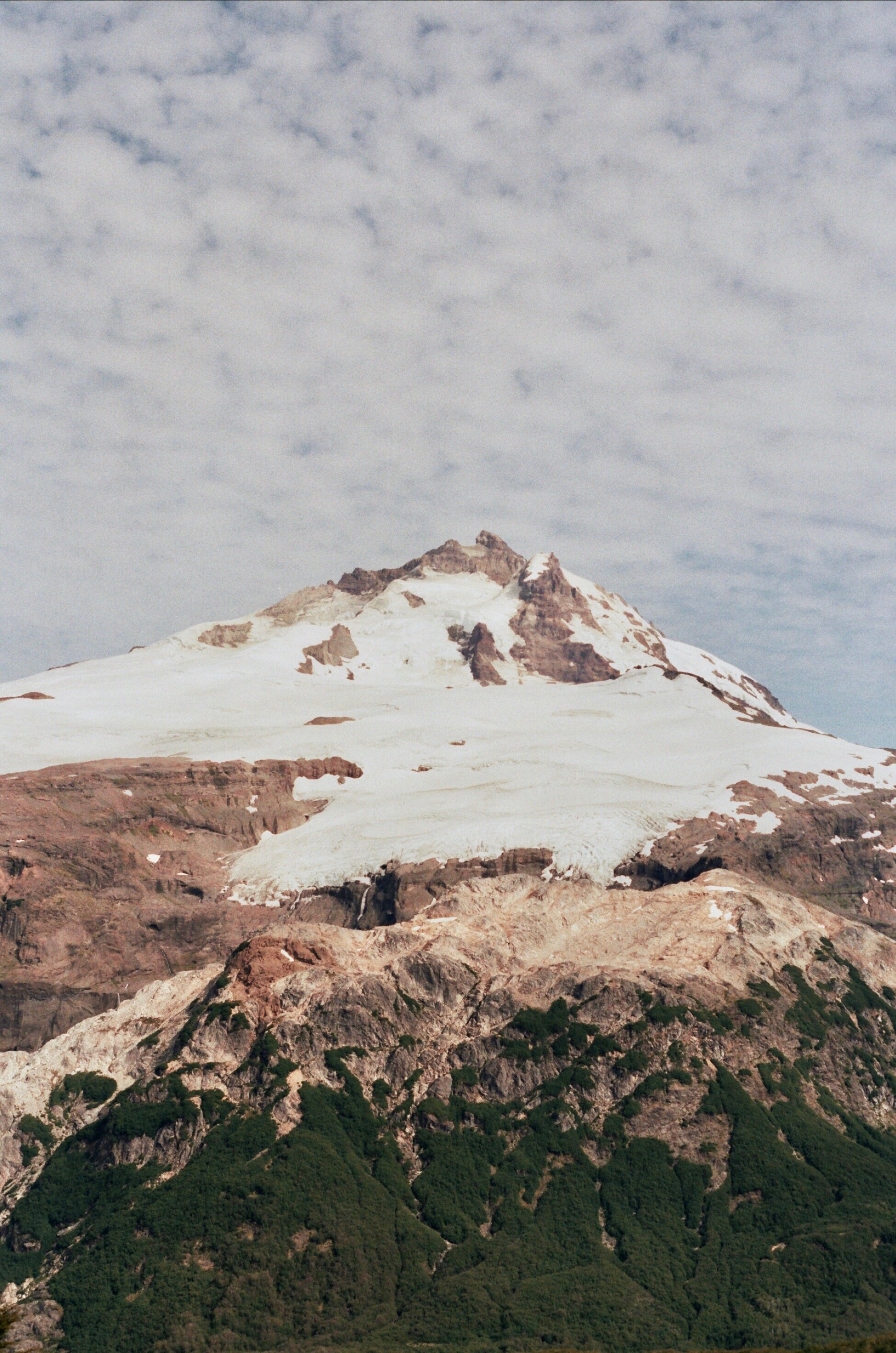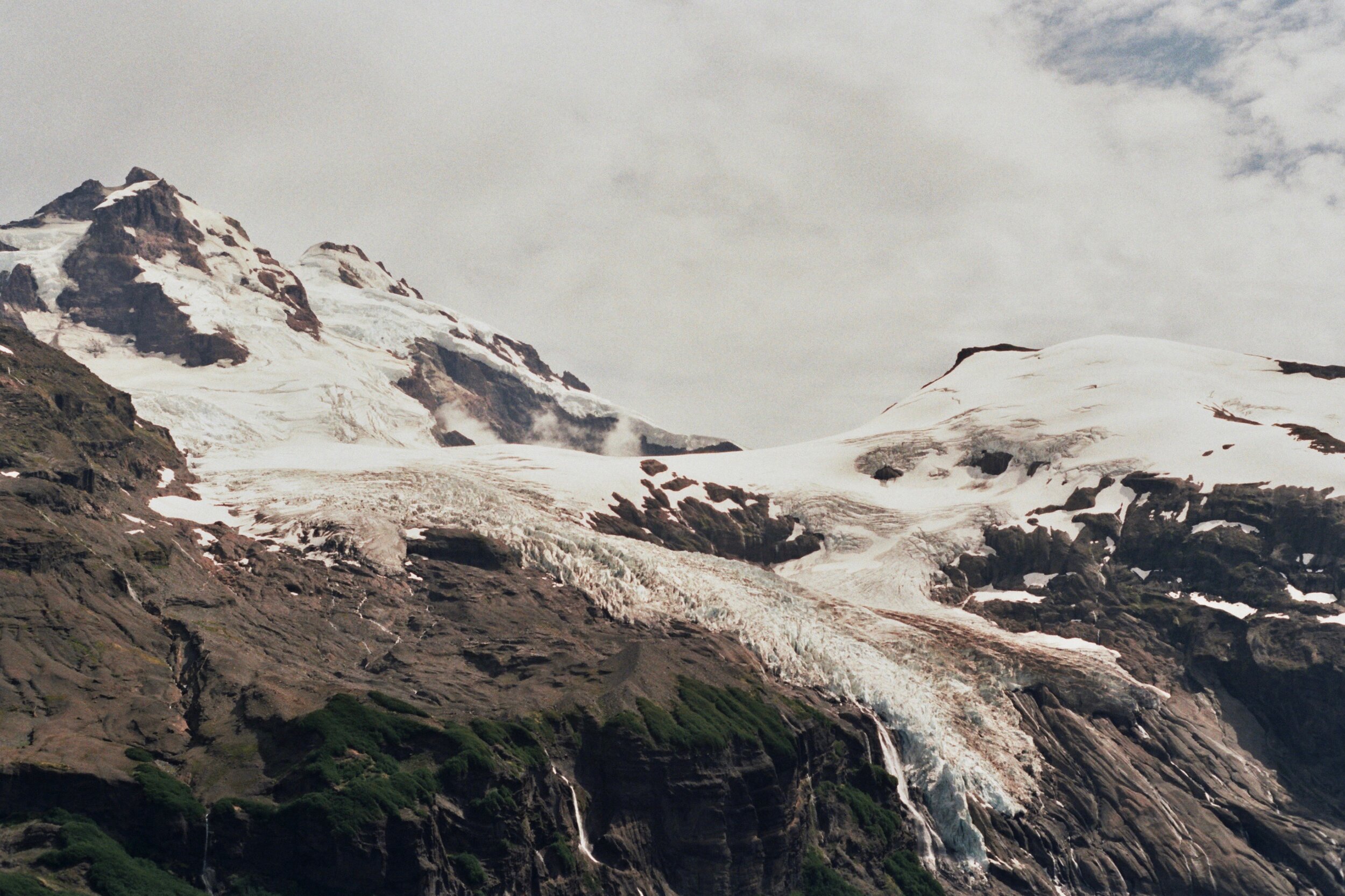Patagonia
Cabo Froward and Dientes de Navarino
We arrived in Punta Arenas after 50hrs on the bus from Santiago; normally it should take around 35hrs, but at the Argentinian border there was no electricity, so we made a detour of 700km to take a different border crossing. Flying within the country is cheap and obviously more convenient, but we try to avoid it because of environmental reasons.
Beside the Villarrica volcano, we’ve passed endless pampas where we spotted many guanacos, rheas, condors and flamingos.
From Punta Arenas we did a 3 days trek towards Cabo Froward, the most southern point of the American Continent itself (excluding the islands), where we got acquainted with the famous Patagonian winds. Here the HMS Beagle also docked and Darwin took a hike up Mount Tarn, encountering a strange mushroom and the Yaghan people. We didn’t climb Mount Tarn, because of the recent heavy rains, we would sank in mud till our hips and we also didn’t meet any Yaghans, because they got extinct. We did try the strange mushroom, now called Darwin’s fungus and admired the beautiful fuchsia magellanica surrounded by humming birds.
Punta Arenas is also a good place for exploring old shipwrecks.
From Punta Arenas we further took a 30hrs boat trip through the Beagle Canal to Puerto Williams (on the Navarino island in Tierra de Fuego). Waves, wind, fog, fjords, glaciers, seals and a whale(!) offered us an impressive scenery.
After registering with the Carabineros, we immediately started the Dientes de Navarino circuit (with a detour to Lake Windhond), the most southern trek in the world. Two dogs (which we named Darwin and Fitz Roy) followed us for 5 days, walking through muddy forests, rocks, snow and bogs together,sleeping next to our tent at night and having fun hunting beavers.
On the other side of the Beagle Canal from the Navarino island (Chilean side), there is Ushuaia (Argentinian side), the southernmost city in the world and so called ‘gateway to Antarctica’. Despite the close proximity between Puerto Navarino and Ushuaia, only recently a very limited and exorbitant crossing service has been established, sufficient to move tourists up and down (12 people per day max). Like this Argentina can thwart the development of Puerto Williams. Hence, the conflict between Chile and Argentina over the Antarctica territory is still ‘silently’ going on even after the 1978 war (which was itself the logical conclusion of a century’s worth of southward expansionism on both sides). Chile and Argentina, as well as the UK claim the Antarctic Peninsula and established their presence there. Naturally, all three countries want access to the resources under Antarctica once it becomes profitable to exploit, plus the stubborn prestige of nations...
Anyway, we ended up paying 100 euros (each!) for a 20 min ride to Ushuaia in a rubber boat. Unlike the charming village of Puerto Williams, Ushuaia, we had to escape fast, since it mainly targets 70+ elderly, offering them tax free shopping and ’exploration’ cruises around the Antarctica archipelago.
Torres del Paine National Park
We spent 8 days trekking in Torres del Paine, the most popular (and pricey) park of Patagonia.
On the first day we climbed together with a Romanian-Canadian guy, Denis, to the top of Mt. Paine. We had to arrange a permit for this; hiking is normally only allowed on official trails and camping/cooking only at official campsites. We continued walking on the ridge, until we had to stop and set camp because of strong winds. Around 7pm we found good shelter outside the wind, set and secured tent with big stones. 9pm storm gets to our valley. Incredibly strong wind combined with hail combined with snow coming from all directions. First, the tent of Denis collapses on top of him, Daniel goes out in his Tevas trying to extra secure our tent, but soon enough the stones we put over the pegs fly away, our tent gets loose too... Denis goes out of his tent but his tent flies with the wind, he catches it and holds it like a balloon in the air. We quickly decide to try and descend back into the forest (800m height difference). Daniel holds our tent while I’m still inside quickly packing our mattresses, sleeping bags etc. I was doing this with very limited visibility, since the tent was collapsed and flapping all over in the strong wind and also snow was entering inside... Packed and ready to go, but walking is still impossible with heavy backpacks; especially for me, I barely attempt to stand up and the wind blows me, so we make a stronger shield with the three of us connected holding arms... We progress slowly like this till the pass- not easy to find our way in the dense snow/fog ahead. On the other side of the mountain the wind was at half the power before, but a steeper path and still a lot of snow. At midnight, after 2,5 hours of walking through the wind/snow storm we camp at the tree line.
Exhausted and wet from fighting with the storm, the next 7 days we continued on the regular O circuit; we also covered the parts of the W trek not included in the O, in total 140 km.
Daniel is botanist of the trip (me expedition leader), investigating the local plants, so we supplemented our instant soup trekking diet with lots of vitamins from berries (calafate, black currant, barberries and chauro) and tea from ‘old man’s beard’ lichens.
Waking up early, crossing muddy forests and scary high shaky bridges, walking till getting bleeding blisters, muscle pain and sunburnt faces, it all rewarded us with great views of the Southern Ice Field, Los Perros and Grey Glaciers, Paine Grande, Los Cuernos and Los Torres.
Los Glaciares National Park
In the 80s, after long conflicts over the territory surrounding the Southern Ice Field, Chile and Argentina, with the intervention of the Pope, reached the agreement that all the glaciers that flow towards the Pacific belong to Chile and all the glaciers that flow towards the Atlantic belong to Argentina.
This strange division takes us hiking finally on the Argentinian side of Patagonia.
From Puerto Natales we took a bus just across the border to a small mining town, Rio Turbio, from where we hitchhiked with four different cars to El Calafate. All four drivers expressed their love for sheep and hatred towards guanacos (which are surely a danger when driving through the monotonous pampas, but nevertheless so cute!).
Other travellers talked us into visiting Perito Moreno glacier, 170km drive from El Calafate, which we hitchhiked in a pick-up truck and a hippie van. Perito Moreno is on average 70m high and bigger than Buenos Aires.
After buying trek-food provisions in El Calafate, we headed towards El Chaltén. Here we did the popular trek around Fitz Roy and Cerro Torre, as well as the more demanding Huemul circuit, totalling 150 km in 8 days.
Because of bad weather conditions, strong wind and rain/snow/hail, on the walks to Laguna de Los Tres and Mirador Maestri, we couldn’t see much, only fog and clouds. But to make it up, we went off the official trail, a little bit of bushwhacking and steep climbing, and got very close to Glacier Piedras Blancas.
For the Huemul circuit we had to wait for two days at a camping down in El Chaltén until the weather improved, otherwise the rangers wouldn’t give us a permit for it.
On the first day of the Huemul trek we took a detour to Pliegue Tumbado peak, from where we finally had an amazing view (at freezing temperatures) of the Fitz Roy and Cerro Torre massifs; we then navigated our own way down on steep slopes to the official path.
On the second day we hiked for 12 hours (31km- 1150m ascent, 1550 descent), climbed two passes (Paso del Viento and Huemul), forded one river and walked for about 1km on glacier Tunél. In only one day I consumed 3 film rolls photographing Glacier Tunél, Glacier Viedma, the biggest glacier of Argentina (four times the size of Buenos Aires) and the amazing Southern Ice Field, 3rd largest water reserve in the world (after Antarctica and Greenland).
Finally, on the last day, we had to walk for 25km through sudden heat on the boring tree-less pampas, dry and full of stingy bushes.
Constantly fighting and enduring the extreme weather makes us exhausted. The spectacular views are to be found in the harshest environment we have ever experienced. We gaze at the blue ice with runny noses, dried skin and blisters on our feet. If we are not walking, it’s too cold to be outside. So we are spending a lot of time in the tent, cooking, reading and talking about making cheese and buying land in a more hospitable mountainous area like the Alps.
National Reserve Lago Jienimeni, Patagonia National Park and Carretera Austral
We left behind the extreme south of Patagonia, the Magallanes and Chilean Antarctica regions, and arrived in the Aysen region of Chile. Here we did a 65km walk, traversing National Reserve Lago Jienimeni and ending up in Chacabuco Valley, in National Park Patagonia. The route is little circulated and poorly marked (especially the way to the glaciers), but probably the biggest challenge were the many river crossings (about 30, without exaggerating); a few rather dangerous and all freezing cold, but most annoying was switching all the time from boots to Tevas back to boots back to Tevas. We did however enjoy the softer climate, the beautiful colours of the lakes and rocks, the glacier sights and especially, making friends with the guanacos. By now we have improved our trekking diet to rather satisfying, healthy meals, making most other hikers envious. Porridge- oats with milk powder, fruits/ dried fruits and nuts for breakfast, bread/wraps/crackers with cheese or avocado for lunch, pasta with tomato sauce (or Philadelphia cheese), Parmesan cheese and a can of vegetables for dinner and the occasional ‘encouragement cookie’ (or muffin). Getting out of Patagonia Park was a hopeless situation. We stood on the side of a gravel road from 9:30 till 16:30 till the second car that passed the whole day stopped for us and brought us out to the main road, Carretera Austral, from where it was easy to hitchhike on. Carretera Austral was built by the army in the times of Pinochet, reason why many people in Patagonia actually like the former dictator, as the road freed them from isolation by connecting Aysen region to the rest of the country. Oddly enough, in Las Juntas you can even find a large sign celebrating the General and his road. We camped overnight in Puerto Bertrand, a lovely little village, and for the next 4 days continued hitchhiking on the dusty, but beautiful Carretera Austral, with views of turquoise lakes, waterfalls and Valdivian rainforests, Campo de Hielo Norte, Cerro Castillo, Quelat National Park and Futaleufu.
Nahuel Huapi National Park
Again in the Argentinian Andes; for most dry and yellow (compared to the wet and green Chilean side), with a few exceptions, like Bariloche area. In Nahuel Huapi we combined the three most difficult treks of the park: the Nahuel Huapi traverse, Laguna Negra to Pampa Linda and Paso de Las Nubes, and made one long walking route, 120km in 7 days. All along the way we didn’t meet any other trekkers, only day hikers going up and down from the main road to the Alps-like mountain huts. The walk from Refugio San Martin (Laguna Jakob) to Laguna Negra was probably the toughest day. Because of the many accidents that occurred in the past, it’s normally only allowed to do with a guide. However, there are still a few people, like us, who adventure to do it on their own. At Refugio San Martin they were supposed to give a small explanation describing the route at 9am, but in Argentinian time that means 10am (the Italian influence plus the endless zipping and refilling of maté). So we started the walk pretty late (after we signed the usual paper stating we are expert mountaineers and responsible of our own lives), and were in the end the only ones to actually make it to Laguna Negra; we assume the others gave up on the way. We did the 9km in the estimated time of 8 hours- our slowness at 1,125km/hr, tells itself the mad terrain we had to cross: proper climbing without safety cables, crossing of a steep ridge till Peak Navidad, followed by a nearly vertical 900m descent- Cordón de Los Innocentes, then by another 350m tiring ascent to Refugio Italia. To this, add the extra challenges of navigation (path is poorly marked), and carrying of heavy backpacks (especially Daniel’s, 25kg) containing food for a week and equipment (tent, sleeping bags, mattresses etc.). We could enjoy though a beautiful panorama over Cerro Catedral, Osorno Volcano and Tronador, while condors were dancing for us (or waiting for us to get weak and eat us...). The continuing days were closely difficult, but the beautiful and varied scenery kept us excited: deep blue lakes, alpine passes, jagged ridges, strange rock formations, bamboo jungle, friendly mosses, dinosaur worldly trees, flower fields, dense rainforest with fuchsias, ferns and hanging lichens, waterfalls, snow and glaciers. The highest of joys was finding and eating of sweet wild strawberries. Each day we got closer and closer to Tronador mountain (in English it translates to ‘Thunder’ because of the scary thunder-like sounds it makes when seracs break and fall), until the last day we reached its 2000m base at Refugio Otto Meiling. I think it should be renamed, friendlier, ‘The Octopus’, because it looks like a giant octopus with many glaciers as tentacles. The one week trek in Nahuel Huapi was surely the most technical we did in Patagonia, as well as one of the most difficult we did in our lives. Good test for our physical skills, mental strength, endurance and the most difficult, eating discipline (there are moments when you want to attack a bag of cookies, but because of the limited carrying capacity, all food is rationed).
